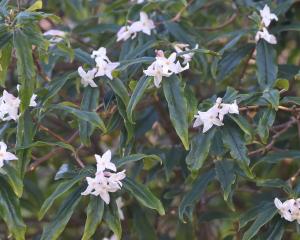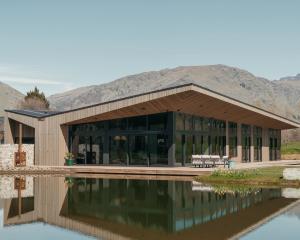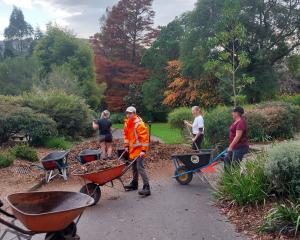Vegetables
Start preparing soil now for early potato plantings in August by adding plenty of compost, but no lime, to an area of garden facing north or northeast.
Ideally, it will be a sheltered site along the western side by a hedge, fence or artificial windbreak.
Compost heaps and topless bins need to be protected from heavy winter rains. Heavy plastic fertiliser bags are ideal, as they help keep the bin warm, but sheets of corrugated iron are satisfactory.
Keep coverings in place with rocks or bricks.
Compost heaps take longer to rot down at this time of the year and should be turned over regularly, a messy job but one well worth the effort.
A rotating barrel composter makes this job easy and a simple version can be made by a competent home handyman.
If fowl manure is available, added to the compost bin, its strong nitrogen content will speed up the decomposition process.
Wear a mask or tie a scarf around the nose and mouth if gathering dry manure from a henhouse.
Green manure crops that have reached 15cm or higher should be dug in from now on, so the ground can be used for sowing early crops in August or September.
Left too long, the raw material will not have decomposed sufficiently for seeds to germinate.
The most active soil micro-organisms are in the top 15cm, so, for rapid decomposition, chop the green crops with a spade and turn under the surface only.
Adding garden lime at the same time will aid the process and keep the soil sweet and easier to work later.
Leave the soil surface as rough as possible for frosts and weather to break it up into better condition.
Flowers
The last penstemons are still blooming, adding a touch of colour when other perennials have tucked down for winter.
They are hardy, reliable plants, with flowers in shades of red, pink and purple, as well as white.
Purple Passion is a good, deep colour, while lavender Alice Hindley and pink Susan are ideal for corner where softer colours are wanted.
Ericas provide a touch of purple, red, pink or white winter colour.
Slow growth in the colder months extends the time flowers stay on the plants.
Erica carnea varieties make up the main winter-flowering group and will tolerate some lime in the soil.
Erica darleyensis flowers for the longest period, bearing masses of small, coral-pink flowers from mid-June onwards.
Fruit
This is the time to buy raspberries, blackberries, boysenberries, loganberries, youngberries and tayberries, as they are planted when relatively dormant.
Tayberries are increasingly popular as they make excellent jam, as well as being a good dessert fruit.
One plant would be sufficient for a small family, as established plants crop heavily.
Black Satin and Navaho are thornless blackberries that fruit on the previous season's wood, while Mapua, Tasman and McNichol's Choice are almost-spineless boysenberries.
Like raspberries, these brambles all give better crops if grown in moist soil to which plenty of manure or compost has been added.












